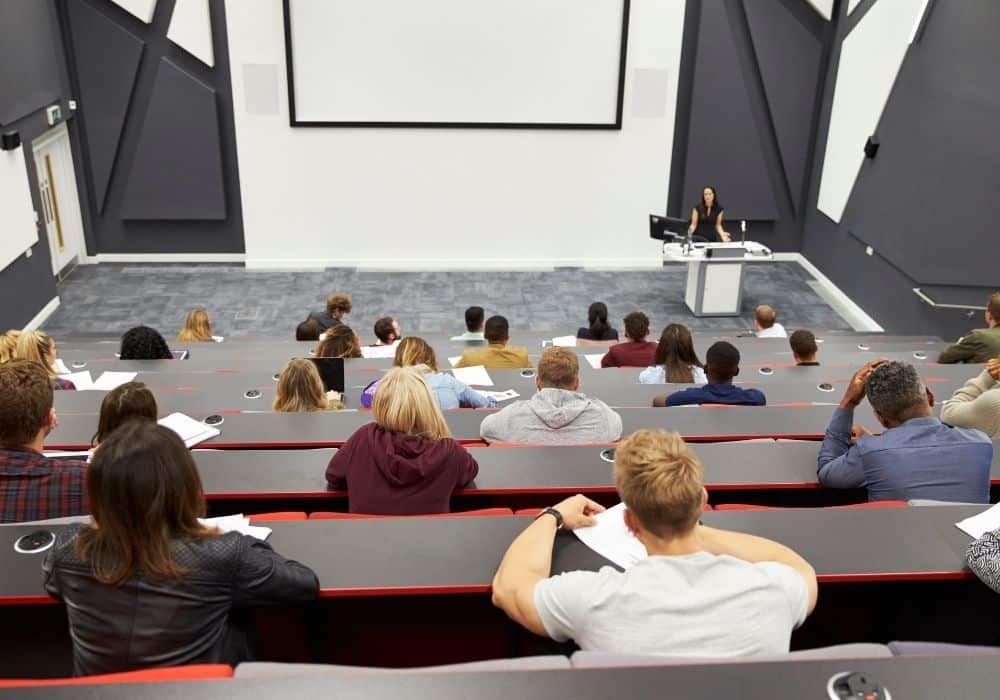What Changes are AV Professionals Facing in Higher Education?
As we start transitioning back to face to face learning where will AV fit into a higher education setting?
As we continue living through a global pandemic, the reliance on AV equipment has never been greater. Staff and students continue to work and learn remotely, facing zoom fatigue as teams have learnt to pivot in-person events to run virtually.
COVID-19 has impacted significantly on the AV sector with a rapid shift of how teams are focussed on delivering audio visual services.
Prior to the pandemic it was PA systems, classrooms and lecture theatres with projectors and displays, and being able to record large lectures for students who missed the live session. Now remote learning has created a large shift, to hosting video conferences and providing a strong audio and video experience for students.
As universities face budget cuts, what will be the future of AV in a tertiary institution?
Scalability is key
Greg Cavenagh is the Manager of Audio Visual and Network Services at Deakin University and has lived through this rapid shift and says that existing AV spaces and purpose built video conference rooms have needed to be adjusted for a virtual experience.
“The importance of ‘close-miking’ to ensure the lecturer’s voice can be clearly heard, is critical in ensuring a great remote-learning experience. Another is ensuring that the lecturer can be clearly seen in the video, by framing the lecturer properly in the camera shot,” he tells Integrate.
For Deakin, Cavenagh says the institution was well positioned for the rapid transition to remote working as Victoria went into lockdown.
“It has been encouraging over the past seven months to observe how well our faculties and professional staff have adapted to delivering a wholly online teaching and learning model, we’re successfully managing over 75,000 people operating remotely,” he says.
For the future, institutions will need to have set strong digital foundations to be able to stay agile, scalable and mobile.
Preventative maintenance takes focus
As teams face largely reduced capital expenditure, there will be much more focus on maintenance rather than upgrading.
The key term here being preventative. Regular upkeep of AV technologies can avoid lengthy repair time and costs down the track. Likewise with consistent updates to AV hardware and software to avoid any system failures.
Having a detailed assessment and maintenance plan is essential to maintaining equipment in ideal condition and being able to maximise the useful life of the equipment.
There is also a growing focus on the environment, and how to best dispose of AV equipment at the end of its life cycle.
Reassess when to refresh
“The most manageable area to reassess is the refresh cycle of spaces. Where a teaching space may have been deemed useful for seven years before requiring technology replacement, that timeline might now need to be extended to eight or nine years,” says Cavenagh.
Thinking a little outside the box at how existing equipment can be used in other ways is also worth considering.
“At Deakin, we’re currently redeploying entire AV systems from some retired remote sites that are four-to-five years old, into our main campuses, to provide more teaching spaces and in-turn, reduce expenditure,” says Cavenagh.
Institutions should not rush to cut budgets
A reduction in investment of AV technology runs the risk of older, existing systems failing over time, which in turn impacts on the end user—the student experience.
Cavenagh believes decisions to cut AV funding would be short-sighted but understands the challenges facing Australian universities, and that small budgets will be necessary to weather the storm.
However, as we continue to accept remote learning as a norm, investment will be key to attracting students.
“Continued investment in the fit-out of teaching spaces demonstrates to students that we take pride in our environments and the facilities we provide,” says Cavenagh.
“As time passes and international students can return to Australia, positive student reviews will play a part in attracting new business.”
Future bright for distances learners
Although universities will face challenges with less international students due to the pandemic, remote learning will continue to provide new opportunities for students unable to be physically present in a lecture theatre.
“Remote learning will be far from temporary! 2020 has demonstrated that remote learning has a bigger part to play in Higher Education. I see AV enabling remote students to experience the same level of engagement in the classroom as a student who is based on-campus,” says Cavenagh.
As technology continues to evolve rapidly, for Cavenagh it’s the online gaming platform Twitch that he’s watching closely.
“Gamers are using AV that I believe is perfectly suited for lecturers to engage with students remotely,” he says.
“Typically the subject of the live-stream is well lit, the quality of the video and the camera shot are engaging for the audience, and the audio is clear and tuned for a remote audience. Understanding how this can be translated into the education environment is what keeps me awake at night!”
Like what you’re reading? Receive the latest AV features straight to your inbox, subscribe to Convergence.
-
Stay up to date with the latest news, industry insights and Integrate updates.
- Subscribe

